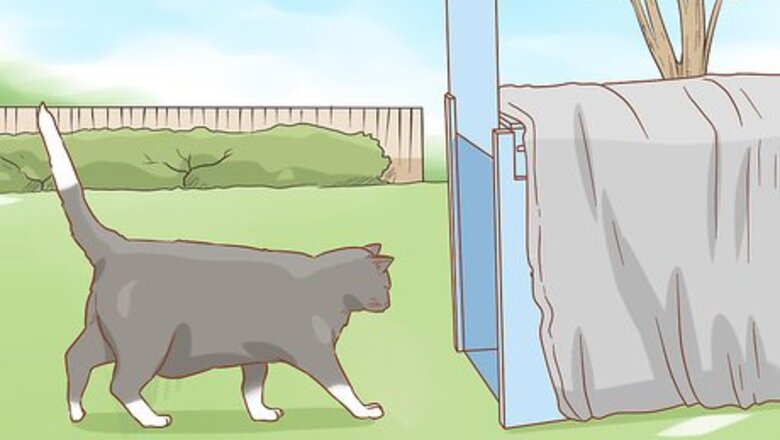
views
Trap-Neuter-Return System
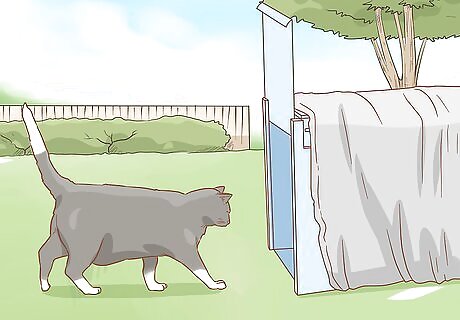
Trap feral cats on your property to neuter and return them. The most effective way to get rid of cats long-term is to first trap them so you can take them to be neutered or spayed. Buy a humane plastic or metal cat box trap with a door, and bait it with tuna, sardines, or cat food. Place the box trap near where the cats regularly feed and cover it with a blanket. When you catch a cat, don’t let it out of the box trap. Cover the trap with a blanket to calm the cat down. You can purchase humane cat box traps at a local pet store, animal shelter, or home-improvement store.

Don’t take cats to the animal shelter. Most shelters don’t accept feral cats, since they are most often not adoptable. Feral cats are often shy and unsociable, so they shouldn’t be invited into people’s homes. Feral cats that enter shelters are almost always euthanized. Note: However, it is okay to contact your local shelter or animal rescue organization for advice. They’ll be able to advise you as to how to effectively trap feral cats and avoid being scratched or harming the animals.

Take the cats to a veterinarian who can neuter and tag them. Many vets have programs that allow them to spay or neuter feral cats at no cost, since the feral cat population is known to be a problem. Call around to vets and shelters in your area to find a program suitable for your situation. Explain that you’d like to bring in a feral cat for neutering. Most vets will also clip the cat’s ear as a sign that it’s already been caught and neutered. Make sure the vet you use is aware in advance that you’re bringing a feral cat in, as they may not handle feral animals. Spaying or neutering the cat is a humane way to keep it from reproducing and controlling local cat populations.
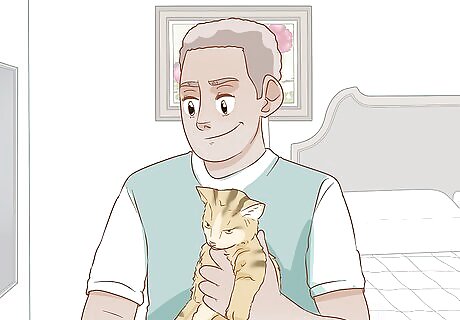
Take the cat back home with you and allow it to recuperate. Once you bring the cat to the vet, you’ll be responsible for its well-being in the short term. Take the cat home with you and to make sure it has healed enough to live in the wild once the procedure is complete. Never release a cat that is injured or anesthetized into the wild.
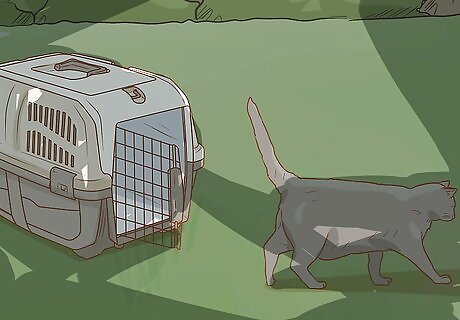
Release the cat at the location where you trapped it. The cat is likely already feeling traumatized and will adjust best to familiar turf. Additionally, male cats keep strange males away from their colonies. This keeps non-spayed females from additional opportunities to mate, which helps to control population. The end-goal of the trap-neuter-return strategy is to prevent the continued breeding of free-roaming cats. In order for the trap-neuter-return method to be an effective way to control a cat population, most or all of the cats in the population need to be trapped, neutered or spayed, and returned. In time, the population will decrease, since the cats won’t be reproducing. If you employ the trap-neuter-return method, it’s safe to feed the cats once you bring them home, since they will no longer be reproducing.
Cat Repelling Techniques

Install a motion-sensing sprinkler to spray encroaching cats. It’s a well-known fact that cats and water do not mix, so felines will stay out of the water’s range and off of your lawn. Set the sprinkler to go off at night when an animal comes within about 4 feet (1.2 m) of it to avoid soaking passers-by on a sidewalk. An added bonus is that your grass and flowers will get a nice watering in the process.

Toss citrus fruit peels directly into your garden plot. Cats dislike the smell and taste of citrus fruits like orange, lemon, lime, and grapefruit. So, the next time you’re eating or juicing one of these fruits, throw the peels and rinds out into your garden. The cats should give the area a wide berth. Note: Planting citrus trees will not be effective in keeping cats out of a garden, since the smell won’t be as strong.
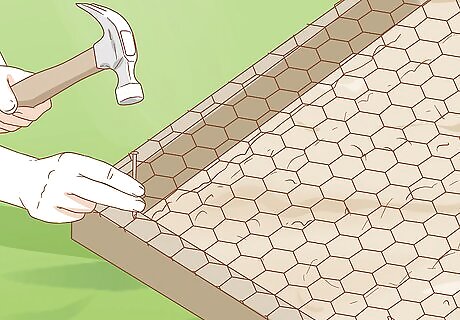
Lay chicken wire over the soil in a garden where cats dig. If you find that stray cats keep digging up your garden or gnawing on exposed plant roots, you can block them with chicken wire. Purchase a length that’s sufficient to cover the length of your garden. Lay the wire directly on the ground, and put stones on the 4 corners so cats won’t be able to move the wire. You can purchase any length of chicken wire at a local hardware store or a home-improvement store.

Plant herbs and botanicals that cats find unpleasant. The idea here is similar to citrus peels. If you fill your garden or planter with herbs that cats can’t stand, they’ll be much less likely to dig through the soil. Put at least 3-4 cat-deterring plants in your garden to keep the pests away. Plants that will deter cats include: Lavender Lemon thyme Rue Pennyroyal

Sprinkle ground black pepper around areas where cats congregate. The cats will be bothered by their spicy paws at grooming time. If you routinely apply the pepper to your yard, cats will soon learn that your property is the culprit. Sprinkle pepper under your porch, in your shed, on your back patio, or wherever you see cats playing or napping. Pepper works to keep cats off of a grass-covered lawn, too. But, you will have to reapply it frequently, especially after heavy rains.
Food and Shelter Removal

Remove the feral cats’ food sources. Start by making sure your trash isn’t overflowing from the can, and that you secure the can with a tight-fitting lid. Make sure that you’re not leaving any organic food scraps sitting around outside. Also ask your neighbors to use tight-fitting lids to seal their trash cans. Keep in mind, though, that cats can subsist on very little, so it may be impossible to completely remove their food sources in your area. If you do feed cats, put the food at least 30 feet (9.1 m) away from your house. Don’t place it at your front door unless you want to encourage cats to collect there.

Remove or block sources of shelter to prevent cats from moving in. Cats seek out warm, dry spaces for shelter from the elements. If they’re unable to find suitable places, they will move on to the next neighborhood. So, fence off any small openings under your porch or deck, and make sure your shed door is tightly closed. Remove woodpiles and trim thick brush so cats can’t make their homes in these areas. Tip: Plywood and chicken wire are inexpensive and effective materials for covering openings. Staple or nail the plywood or wire over the openings to make them inaccessible to cats. If you notice cats gathering in a particular area of your property, figure out what they’re using for shelter. Then block the cats’ access to it.
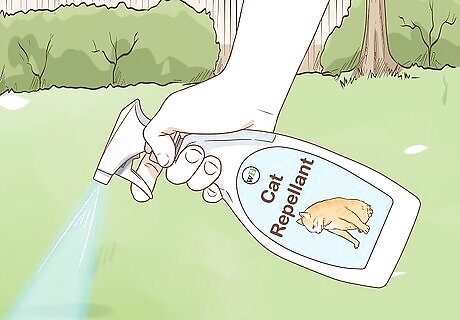
Spray your yard with a commercial cat-repellent. Various companies produce cat-deterring chemical sprays. These sprays contain ingredients and smells (whether natural or synthetic) that cats find unpleasant. Follow the directions printed on the packaging as far as how often to spray the repellant. Spray areas of your yard in which the cats frequently spend time. You can purchase cat repellants at most pet stores and home-improvement stores. These products are safe and non-toxic to both feral and domesticated cats.
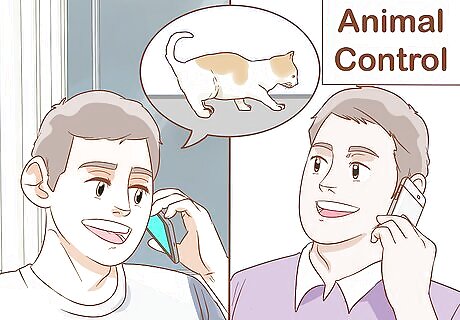
Call animal control if you can’t control the population on your own. If your property is being overrun by feral and stray cats, you may need to call your county animal control office. They’ll take steps to help remove the cats. Be aware, though, that animal control agencies usually trap the cats and euthanize them. Removing a community of cats from where they are living creates a vacuum effect. New cats quickly move into the vacant area and start using the resources to thrive and survive.

















Comments
0 comment